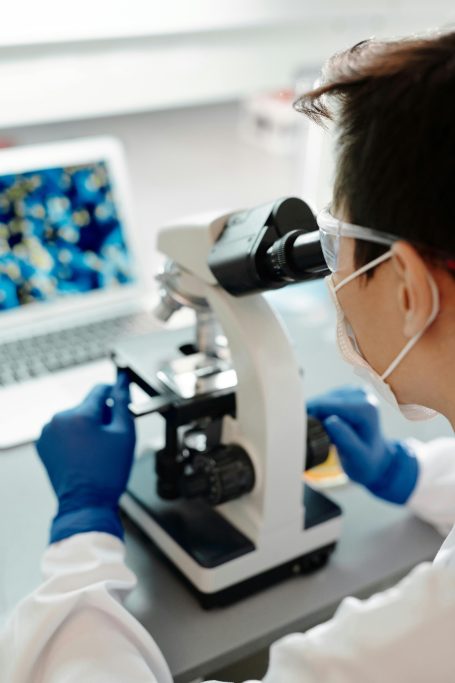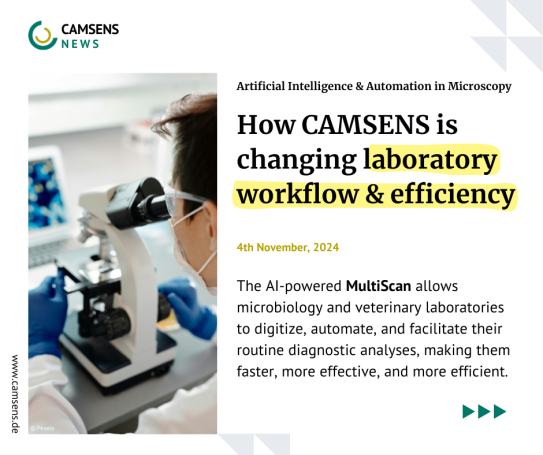Bremen, 04 November 2024
Artificial Intelligence & Automation in Microscopy
How CAMSENS is changing laboratory workflow and efficiency
The AI-powered MultiScan allows microbiology and veterinary laboratories to digitize, automate, and facilitate their routine diagnostic analyses, making them faster, more effective, and more efficient.
Problem
Microbiological and veterinary laboratories play a critical role in the diagnosis and treatment of diseases for human and animal health. These labs work to identify, examine, and diagnose microorganisms—such as bacteria, viruses, fungi, and parasites—to aid in disease detection, monitoring, outbreak response, and prevention. Since most microorganisms are invisible to the naked eye, microscopes are essential tools in every microbiology and veterinary lab. Following validated methods, diagnostic labs analyze samples across a variety of areas to deliver accurate information. This work requires skilled professionals with the necessary expertise and experience to ensure successful detection and interpretation of results [1]. Traditional microbiological methods have a turnaround time of 48 to 72 hours [2], yet they often fall short in providing rapid identification. In addition, 85% of laboratorians said they had experienced burnout during their career as a lab professional [3]. As a result, there is a growing need for faster and more efficient analysis methods that reduce strain on laboratory staff.
Solution
In this context, advancements in laboratory technology are essential to meet the growing demand for quicker, more reliable diagnostic results. To address these limitations, CAMSENS developed the MultiScan: the first fully automated system capable of high-throughput scanning across various sample types —including microscopic slides, McMaster chambers, counting chambers, mini-FLOTAC, and Petri dishes— in a single cycle. Through digitalized imaging and AI-driven analysis, specific microorganisms can be identified with remarkable speed and accuracy. This allows laboratories to deliver results significantly faster than traditional methods, streamlining workflows and reducing strain on staff by freeing them from labor-intensive tasks.
Interested in high-throughput, multi-sample scanning for faster, AI-powered lab analysis?
Contact us to schedule a demo or learn more. Visit www.camsens.de or email us at info@camsens.defor more information.
Sources
[1] https://doi.org/10.1086/318725
[2] https://isid.org/guide/infectionprevention/microbiology-laboratory/
[3] https://www.mlo-online.com/home/article/21260764/talking-about-burnout-in-the-lab
Wir benötigen Ihre Zustimmung zum Laden der Übersetzungen
Wir nutzen einen Drittanbieter-Service, um den Inhalt der Website zu übersetzen, der möglicherweise Daten über Ihre Aktivitäten sammelt. Bitte überprüfen Sie die Details in der Datenschutzerklärung und akzeptieren Sie den Dienst, um die Übersetzungen zu sehen.







